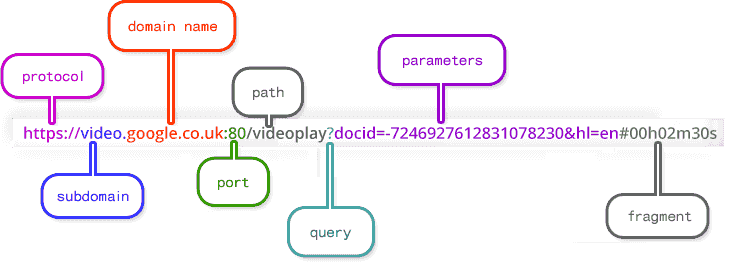The most targeted the popup is, the better the results it will deliver. Page targeting gives you fine control over which pages a popup should or should not be shown in.
To edit it a popup’s page targeting settings, go to Targeting > Page targeting of that popup’s page.
When you select the option Specific page(s), you’ll find to two different sections: Limit to pages, and Exclude pages.
When you include a URL rule in the Limit to pages section you’ll limit the pages where the popup in question will be displayed, to those that match that URL rule. If you add another rule, you’ll expand the limit to those that also match that rule. So, for instance, if you add the two rules…
URL contains: about
URL contains: contact
… the popup in question will display (only) on pages that contain either the string about on the URL or the string contact.
When you include a URL rule in the Exclude pages section, you’ll be excluding all URLs that match that rule, from those that match the URL rules in the Limit to pages section. Continuing with the same example above, if we added the following rule to the exclude pages section…
URL contains: new-york
… the popup would only show up on pages that contained either about or contact, but that at the same time didn’t include new-york. So, for example:
These three WOULD match:
http://example.com/contact/
http://example.com/contact/vancouver-office
http://example.com/about/
But these WOULD NOT:
http://example.com/
http://example.com/blog
http://example.com/contact/new-york-office
URL contains is just one of the possible options for constructing URL rules. You have all of these options:
Simple URL match
Exact URL match
URL starts with
URL ends with
URL contains
URL Regular expression
To understand each one, you can expand each one of them below. But, first, to understand each one of them, it helps to know about the composition of an URL. The image below does a good job at explaining it.

A match will occur when the URL path your visitor is on, is the same as the URL path you specify. Protocols, queries (and parameters) and fragments are ignored.
Note: If you don’t enter the domain name (and protocol), holdonstranger will assume the domain of your website.
The table below shows what would and wouldn’t match http://www.site.io/cart
| Match | URL |
| Yes | http://www.site.io/cart/ |
| Yes | http://www.site.io/cart/#app/123 |
| Yes | http://www.site.io/cart/?origin=fb&user=45fde31#/app/123 |
| No | http://www.site.io/cart/checkout |
| Yes | http://site.io/cart/ |
| Yes | https://site.io/cart/ |
| Yes | https://www.site.io/cart/ |
This type of match is similar to the Simple URL Match, except that the queries (and parameters) and/or fragments aren’t ignored.
A match will occur when the URL you specify is exactly the same as the URL your visitor is on.
The table below shows what would and wouldn’t match http://www.site.io/cart?origin=fb
| Match | URL |
| No | http://www.site.io/cart/ |
| No | http://www.site.io/cart/EN |
| Yes | http://www.site.io/cart/?origin=fb |
| No | http://www.site.io/cart/?user=2bf&origin=fb |
| No | http://www.site.io/cart/?origin=fb#app/3 |
This type of match occurs when the URL the visitor is on starts exactly with the same string of characters you specified. The protocol, sub-domain and domain name are not ignored.
The table below shows what would and wouldn’t match http://www.site.io/cart
| Match | URL |
| No | https://www.site.io/cart/EN |
| Yes | http://www.site.io/cart/EN |
| No | http://www.site.io/cart |
| Yes | http://www.site.io/cart/?origin=fb |
| No | http://site.io/cart/ |
This type of match occurs when the URL the visitor is on ends exactly with the same string of characters you specified (ignoring trailing slashes).
It does not ignore queries, parameters or fragments.
The table below shows what would and wouldn’t match /cart
| Match | URL |
| Yes | http://www.site.io/cart |
| Yes | https://www.site.io/cart/ |
| No | http://www.site.io/cartola |
| No | http://www.site.io/cart?origin=fb&user=2bf |
| No | http://www.site.io/cart#app |
This type of match occurs when the URL the visitor is on contains, at least once, the exact string of characters you specified.
It does not ignore queries, parameters or fragments.
The table below shows what would and wouldn’t match origin=fb
| Match | URL |
| Yes | http://www.site.io/cart/?user=2bf&origin=fb |
| No | http://www.site.io/cart?user=2bf |
| Yes | http://www.site.io/cart#app3?origin=fb |
The table below shows what would and wouldn’t match www.site.io
| Match | URL |
| Yes | http://www.site.io/ |
| Yes | https://www.site.io |
| No | http://site.io |
| Yes | https://www.site.iomega.com |
This type of match sets you free from from the limits of the other match types. Regular expressions, let you describe whatever search pattern you can think of, through a ‘simple’ sequence of characters.
Regular expressions are a beast of their own. If you’re not familiar with them — and would like to be — we recommend the following guide to get you up to speed: regular expressions guide. To test your own regular expressions, you can do so here.
If you find it too complicated (which it might at first), let us know, and we’ll write your own regular expression in no time.
Note: Regex matches are evaluated using JavaScript’s built-in regular RegExp module. Your expression is matched against the full URL, however, it does not need to match it in it’s entirety.
